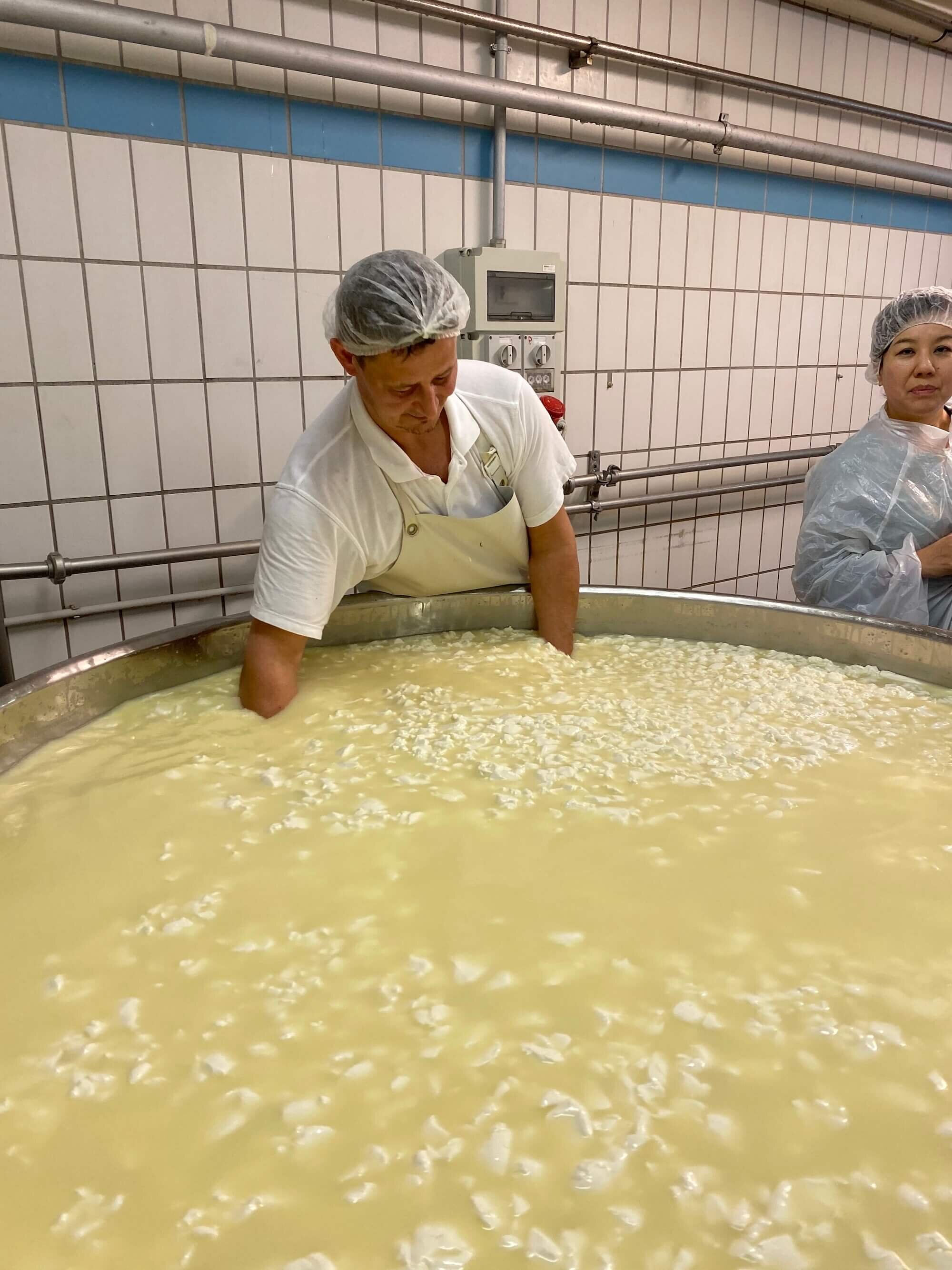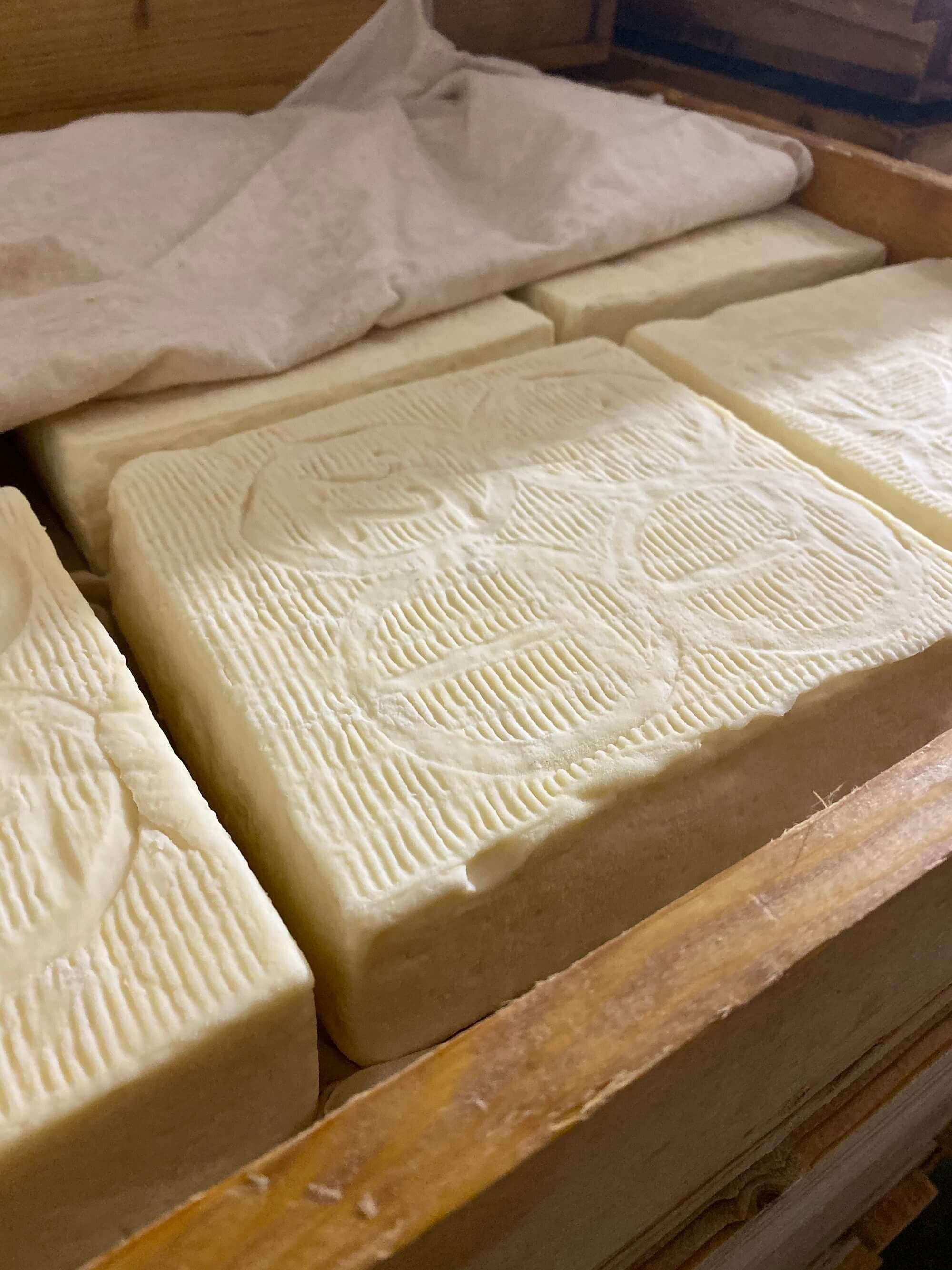Why Are We Celebrating Raw Milk Cheese?
Editor’s note: We couldn’t be more pleased to welcome Carlos Yescas as a contributor. Readers will recognize his name from the Oldways Cheese Coalition where he has been a consultant. Among his other notable accomplishments, he is a judge at the World Cheese Awards; a member of the Guilde Internationale des Fromagers and a member of the Confrérie du Gruyère. He was also one of the founders of Lactography, the first artisan cheese distribution company in Mexico.
We are sitting in a bakery in near Auroville, in southern India. The place was recommended by the general manager of the local bean-to-bar chocolate producer. On our table a loaf of crusty bread, strong coffee, some curry-infused chocolates, and two pieces of raw milk cheese just purchased from an Italian immigrant couple. I have been in unique spots of the world seeking raw milk cheeses, but this is as far as I have been from my natal Mexico City. Our guide is Mansi Jasani, a US and French trained cheesemonger now running her own cheese-catering service in Bombay.
The Raw Cheese Meltdown
We met online and the previous time I saw her, we were in a tasting of Japanese cheeses in Richmond, Virginia. This time, our love of cheese brought us to the province of Tamil Naru to visit Indian cheesemakers. Just a couple of days ago, she helped me cater a selection of traditional and new cheeses from all over India. I was in India attending a wedding just before the start of the pandemic. The guests and I were excited by the wonderful quality of the cheeses available. However, most of the guests had never heard about Indian cheese before the wedding. The guests were both locals and foreigners, I kept thinking how is this possible? Why are these products so obscure even to the locals? Change the nationalities and locations, and this is the same experience I have had in Colombia and Peru. The most amazing local cheeses are hardly known by the local population. If you mention they are made with raw milk, people freak out or revere them to the point of creating relics out of them. Often the question is, why does this matter? Does eating raw milk cheeses matter or is this another foodie fad?
The Opposition to Raw Milk
Cheese, unlike other agricultural products, does not squarely align in an urban vs rural axis. Nor in an ingredient vs meal debate. Points of contention include, native vs standardized cultures, heritage breed dairying, animal or microbial rennet, generic name use and geographical indications protections, and ecological impact of dairy farms. Still, use of raw milk or pasteurization are perhaps two of the most important issues that define the debates around traditional cheese today.
There are producers and consumers on both sides of these issues, but most significantly is the opposition or at least common animosity by regulators for the use of raw milk for cheesemaking all around the world. While Western European regulators, specifically in France and Italy are amenable to raw milk cheesemaking, by enlarge the foundation of European food safety principles are based on 1950s science and understandings, which discourage consumption of raw milk cheeses. In Eastern Europe, Latin-America, and Asia rules and regulations are either inexistent, or haphazardly derivative of those adopted by the United States – Food and Drug Administration in the 1940s.
Defining “Raw Milk”
Let me stop here and explain what I mean when I use the term raw milk cheese. Most definitions pose it as an opposite of pasteurized milk cheese, but this is an incomplete understanding established by the creation of milk pasteurization laws. Raw is not the same as unpasteurized. In fact, depending who you ask unpasteurized milk is a completely different category of milk, one that could have been heat-treated but not to the temperatures or times established by regulations. Raw milk is also not refrigerated and not fermented nor cultured. Raw milk is freshly milked, kept at temperature, nor homogenized. For cheesemaking raw milk is an ingredient, and as such transformed quickly by the interactions of microorganisms and cheesemaking practices.
These interactions happen so fast and combine so many elements that sometimes is difficult to understand them in isolation. Suffice to say here, raw milk cheese is a different product than raw milk. It may share some characteristics, but the two products behave distinctly in similar conditions.
Why Raw Milk Matters
Raw milk is the foundation of traditional cheese, but what makes it so important is that in it, raw milk carries the microbial communities of each region. Thermalization and pasteurization diminish that microbial ecology. People in gastronomy consider this microbial ecosystem part of the terroir. In cheesemaking, terroir also includes human practices and animal/human interactions. These interactions start before the milk is even obtained, in fact even before the dairy animal is pregnant. They include breed selection, pasture rotation, and many other animal husbandry practices. Raw milk is the culmination of those practices.
Industrialization in the US, England, and Western Europe brought urbanization with it. Limited cramped city space was no place for dairy animals, which meant that milk had to be produced far away from where it was consumed or with animals living in less desirable conditions in the city. Raw milk became dangerous because pathogens associated with poor hygiene and abusive animal husbandry practices were a way to cut the cost of production. Infant mortality from milk and cheese consumption became a real concern. Pasteurization fixed some of these problems, by removing from raw milk deadly pathogens along with beneficial microbes. For cheese, this meant microbially homogenous milks that needed added cultures to jump-start the fermentation process. The native microbiology was wiped clean.
With pasteurization, milk lost the character of its place of origin and opened the door for the industrialization of milk production. This further disrupted animal welfare, ecological cycles of production, and most importantly rural life. Advocates for raw milk cheese argue that preserving the use of raw milk is important to prevent the erosion of standards.
Often presented as a flavor issue, cheesemongers argue that raw milk cheeses taste better. But organoleptic attributes are experiential. I rather would like to argue that raw milk cheese is political.
Making Raw Milk Cheese
Having partly define what I understand as raw milk cheese, let’s go back to the issue of why raw milk cheese matters. Let me start with the simple premise that you probably love Manchego. It is delicious with honey! But how did this cheese become one of the most iconic from Spain? I call it Cheese Politics. The act of codifying and protecting a set of socio-cultural decisions by law, either within a Geographical Indication scheme or a trademark.
Manchego Artesano DOP production starts with raw milk. In the case of this cheese with milk from Manchega sheep from the region of Castilla-La Mancha in central Spain. This milk once obtained is pooled and let to rest. This milk slowly ferments and develops flavor. The next morning the original milk is combined with new raw milk. This cheesemaking process relies heavily on microbial communities to culture the milk. After fermentation, another cheesemaking practice and group of microorganisms are used to curdle the milk, in this case by animal derived enzymes known as traditional rennet. Once a gel has formed, the curd is cut, agitated, bagged, molded, pressed, and drained. The wheels are then salted in a brine solution and aged. (I have italicized human cheesemaking practices, underlined microorganism’s actions, and italicized and underlined processes that relied on a combination of both aspects.) This flattened process is used to illustrate the careful balance needed to produce this one type of cheese. The full process is far more complex, but it can be achieved anywhere in the world. So, what makes Manchego so special or uniquely Spanish?
Raw milk is the beginning of this process, what makes it so important is that in it, raw milk carries the microbial communities of each region. What makes raw milk cheese even more important is that it acts as a reverse prism that allows us to experience all the human and non-human factors in one food. This prism is accessible to us but has been mystified as something difficult to understand. Why you ask? Politics.
Raw Milk is Political
Often presented as a flavor issue, cheesemongers have been taught to argue that raw milk cheeses taste better, and therefore should be cherished. But organoleptic attributes are experiential, and a better flavor for me, may not be the same for you. Instead, I would like to argue, raw milk cheese is political. Because it calls into attention the need for diversity.
Diversity of microbial communities, cattle breeds, feeds, cheesemaking practices, cheese aging practices, salting techniques, producers, REGIONS, and supply chains. (I have bolded to account for a combination of animal/human aspects and CAPITALIZED for geographical aspects.)
Seemingly unimportant everyday decisions are hugely political once they become part of a habit and a practice. If for example, we are choosing only one type of cow, or a selection of only one type of lactic culture, or only one form of cheesemaking. We tend to end up with standardized commodity cheeses that while delicious, are generic. Those generic products can be sold anywhere, at a standard price, and used in a typical way: melted. While this convenience may seem useful for some consumers, it rewards conformity in the marketplace and erases the producer. This in turn, pushes producers to compete on price and not quality, rewarding those who can make cheese cheaper and faster.
Raw milk cheeses, on the other hand, cannot so easily be standardized. There are too many points in the system where things change and make those cheeses unique and interesting. They are made with a different idea in mind, not just to turn milk into cheese, or turn a profit, but to feed and nurture. Seeking them, eating them, cherishing them is a political decision to support those complex relationships that allow them to exist. This is Why Raw Milk Cheese Matters.
Saturday October 16 2021 is International Raw Cheese Appreciation Day, follow along with the activities on Oldways Cheese on Instagram.





